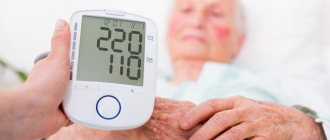Chest pain can be a symptom of dozens of conditions related to the heart, stomach, lungs, musculoskeletal and neurological problems. Some situations require urgent medical attention, while others do not require treatment. But only a specialist can determine the danger of the cause of pain after a comprehensive diagnosis. For any pain in the chest, contact the diagnostic department in Anapa. Here the source of anxiety will be determined and a treatment plan will be drawn up.
What can hurt your chest?
Chest pain is familiar to people of all ages. Painful sensations occur in the middle of the chest, left, right, lower or upper. They can be aching, burning, sharp, growing. They last for several minutes or for a long time, returning periodically, accompanying some specific actions: coughing, inhaling, increased stress.
Inside the chest cell are large vessels, the heart, lungs, esophagus, muscles and ligaments. All this can cause pain of various types.
It is customary to classify two types of chest pain :
- Vertebrogenic – associated with spinal pathology.
- Nonvertebrogenic – caused by diseases of blood vessels and internal organs, as well as those of a psychogenic nature.
But it is often very difficult to determine what exactly hurts and in what place in the chest. After all, pain can occur near the problem area from pinched nerves or an inflammatory process, be radiating or wander.
Causes of chest pain
Although chest pain is not always due to cardiac problems, these problems can rightly be put in first place.
Nature of pain in heart disease :
- Angina pectoris is of a compressive nature, radiating to the shoulder, and occurs with increased stress, for example, when walking quickly or climbing stairs.
- Heart attack - prolonged (more than 20 minutes) intense pain in the chest of a pressing nature, shortness of breath, fear of death. Urgent assistance required.
- Myocarditis is not severe, but pressing, combined with an accelerated heartbeat.
- Pericarditis is acute, aggravated by a horizontal position of the body.
- Cardiomyopathy is moderate and appears after exercise and eating.
Heart pain is usually difficult to localize; in cases of slowly progressing diseases, it is periodic.
Problems with the respiratory system cause different types of chest pain:
- Bronchitis is intense, worsens with coughing.
- Pulmonary embolism is acute, similar to a heart attack, and requires immediate medical attention.
- Collapse of the lung - accompanied by severe shortness of breath.
- Pneumonia - stabbing, worsening with inhalation.
- Pleurisy accompanies every breath and becomes even more noticeable when coughing.
- COPD – pressing with wheezing and cough.
- Lung cancer – irregular, may be accompanied by cough with sputum and hemoptysis.
It is important to know that there are no pain receptors in the lungs, so the muscles in the chest hurt from tension or in the event of an inflammatory process. The sensations may be localized in the middle or aggravated by inflammation.
Causes and types of chest pain due to problems with the digestive system :
- Disorders of the esophagus - appear during the process of swallowing.
- Diseases of the gallbladder and pancreas are accompanied by painful sensations in the upper abdomen.
- Gastroesophageal reflux - accompanied by heartburn: a burning sensation behind the sternum.
- Gastritis, stomach ulcer - dull aching pain on the left under the ribs or on the left in the sternum.
Musculoskeletal pain in the chest area causes rib injuries, scoliosis, cartilage diseases, thoracic osteochondrosis, the symptoms of which are very similar to a heart attack. A pinched nerve is accompanied by numbness in the problem area. Dull muscle pain of unknown origin can persist for a long period of time. They are safe, but it is important to exclude life-threatening causes.
Chest pain also occurs during panic attacks and intercostal neuralgia, which is characterized by a pinching sensation in the middle of the sternum. In women, painful conditions can be provoked by diseases of the mammary glands and cyclical changes in hormonal levels.
Conversations about pain. Topic #1 - chest pain
Maslov Sergey Vyacheslavovich
Therapist, Cardiologist
April 26, 2021
What does pain in different parts of the body indicate? How to decipher these signals that the body gives us for a reason? We will talk in a series of materials devoted to pain and the reasons that cause it.
It is often not customary for us to consult a doctor immediately when something gets sick. First, painkillers, ointments, and warming are used. There is still hope that “it will go away on its own,” “I’ll endure it.” Sometimes this happens, but, unfortunately, much more often, delaying a visit to the doctor leads to the disease developing, increasing the risk of complications and life-threatening conditions.
We did not intend this series of articles to help patients self-diagnose. We want to give an idea of how multifaceted this problem is. What a huge number of different reasons can cause seemingly similar pain sensations.
It is not always possible to determine the cause immediately. Outlining the range of problems, the doctor first checks the most likely ones. In this he is helped by laboratory tests, diagnostic examinations, examination and conversation with the patient. If first-round problems are excluded, rarer ones are considered. You need to be prepared for the fact that treating pain may require several visits to the doctor and stages of diagnosis.
For a doctor, pain, especially when it first appears in a patient, is primarily a symptom - something in the body is not working correctly. There are two main tasks, and they are interconnected: to alleviate the patient’s condition and to understand what is happening.
Our first conversation is about CHEST PAIN
The area related to the chest is defined from the end of the neck (from the collarbones), to the edge of the ribs (where the stomach begins, which we will talk about in the next conversation). We chose chest pain for the first topic of the series, since they can be called the most terrible in terms of the likelihood of developing life-threatening conditions.
There are basic tests that can help confirm or rule out the most common causes. If you complain of chest pain, even if the symptoms are more consistent with other diseases, an ECG to rule out disturbances in the functioning of the heart. The doctor needs to check this direction, since the most dangerous conditions are associated with it. Another important stage of examination for chest pain is an x-ray of the lungs. A clinical blood test is prescribed to detect inflammation, a biochemical blood test determines markers of damage to the stomach and gastrointestinal tract. This is the main primary diagnosis; the doctor prescribes other tests and examinations based on specific symptoms and indications.
Due to the location of the organs in the chest, it is not always possible to understand what exactly hurts, and the list of diseases that can cause chest pain is quite extensive. Even the liver, gall bladder, and stomach located below can radiate pain to the chest area. This is explained by both the close location and the innervation that occurs through the solar plexus. Innervation is impulses that go from organs to the brain and back. If we try to simplify this process, the brain gives a command, the organ responds with an action, and the signal about this action goes back to the brain. If there is a problem in this organ, a pain impulse arises, which can radiate not in the organ itself, but in the nerve center.
NOT SIMPLE OSTEOCHONDROSIS
Similar mechanisms are observed in osteochondrosis. Almost everyone has this disease, and it is constantly getting younger. Therefore, osteochondrosis occupies a significant place in the number of requests from patients who come with complaints of chest pain. When the spinal nerve roots are compressed due to changes occurring in the spine with this disease, signals from various internal organs pass through the diseased nerve. And it may seem that it is not this nerve root that hurts, but the internal organs that hurt, although there are no pathologies in them themselves. Depending on the damage to different roots, echoes can occur in different areas. The most frightening sensations for patients are the sensations of heart failure, when, due to increased sensitivity of the chest, the heart rhythm is perceived differently and the impression is that the beats are too strong.
The brain, when receiving signals of pain, tends to reduce movement in this area. With osteochondrosis, there is a decrease in mobility in the places where the ribs are attached, the amplitude of movement of the chest is limited, and if a person needs to breathe more intensely, quite intense pain in the chest and a feeling of lack of air may occur.
Muscle pain may also occur in the chest area; more often they are associated with sudden movements, overexertion, hypothermia, as is the case with other muscles of our body.
HEART PAIN
Angina pectoris
Angina pectoris is very common; this disease is associated with atherosclerosis. Atherosclerosis is the accumulation of cholesterol deposits in and on the walls of blood vessels, which impair their patency. Angina occurs when atherosclerosis affects the blood vessels of the heart. It is characterized by severe, squeezing pain in the region of the heart during physical activity; usually when the exercise ends, the pain goes away.
Heart attack
The most well-known, frightening and dangerous cause of acute chest pain is a heart attack. When a heart attack develops, a heart vessel suddenly becomes clogged, blood immediately stops flowing into one of its areas, it is no longer supplied with oxygen, experiences shock, and the tissue in that area begins to die. In this case, acute pain occurs, one of the most intense in intensity possible in the chest. This pain has a huge number of epithets: tearing, piercing, “like the blow of a knife,” fire in the chest, etc.
There are several conditions when the pain of a heart attack can be “erased.” For example, with diabetes, when the nerves that conduct pain impulses to the brain change, taking certain medications and in a number of other cases. But this is an exception; most often the pain is very severe.
A heart attack rarely occurs at rest; in order for an atherosclerotic plaque to rupture, something must provoke a load on the heart, an increase in its contractions, and a rise in pressure.
Myocarditis
Inflammation of the heart muscle of an infectious nature, for example, as a complication of influenza or tonsillitis, can cause pain in the chest that varies in intensity from mild nagging to severe. Usually accompanied by general intoxication and deterioration of health.
AORTIC LESION
Chest pain may be associated with dissection or inflammation of the central vessel, the aorta. Acute aortic dissection is fatal in a large percentage of cases. Unfortunately, rarely when they manage to get to the hospital and have a safe operation, everything happens too quickly. The pain is comparable in strength to a heart attack. It can also occur in a less acute form if the dissection occurs in the abdominal region, but in any case it is a dangerous condition that requires immediate medical attention.
THE LUNGS DO NOT HURT
It is necessary to exclude pneumonia, which can occur without a significant cough, and other diseases. Pneumonia itself practically does not cause pain; there are no pain receptors in the lung tissues. Pain during pneumonia is associated either with muscle tension due to coughing, or with the addition of pleural lesions (pleurisy), or with an abscess in the lung.
With viral diseases, a complication occurs such as inflammation of the cartilage of the sternum, with which the ribs come into contact - perechondritis. Like any joint, these joints can become inflamed and painful.
NEIGHBORHOOD INFLUENCE
Returning to osteochondrosis, non-steroidal anti-inflammatory drugs and sometimes hormone therapy are often used in the treatment of this disease. All this can worsen the condition of the digestive system, leading to the formation of ulcers of the stomach and esophagus. This is a rather painful condition, the pain can begin either suddenly or increase gradually. And it is localized exactly in the middle of the chest, sometimes rising higher. May be accompanied by a burning sensation. Combined with increased sensitivity of nerve endings due to osteochondrosis, it can cover the entire chest in front. More often occurs after eating and in a lying position, at night. A frightening condition arises for patients, sometimes it is even mistaken for a heart attack, especially in older people.
If the stomach is malfunctioning, a condition may arise when, instead of moving food down, it begins to contract in the opposite direction, causing food to reflux into the esophagus and even prolapse (pushing) part of the stomach into the opening of the esophagus. Prolapse is characterized by sharp pressing pain in the chest. What’s interesting is that this pain can go away when you take plain water, the acidity decreases, the stomach returns to its place and the situation returns to normal for a while. Osteochondrosis as a concomitant disease causes an increase in these pains.
If the peristalsis of the stomach and duodenum is disrupted, reflux of contents into the pancreatic ducts may occur. In this case, acid production is activated, and the pancreas begins to digest itself. In this case, inflammation occurs, cysts can form, pain radiates in different directions, including in the area of the diaphragm.
ADDITION IS NOT A PLUS
While listing the various causes of chest pain, it is necessary to note another important point. The diseases are cumulative, which further complicates the doctor’s diagnostic task. It does not happen that if a person has osteochondrosis, then heart disease is excluded. More often, unfortunately, it’s the other way around, since the body is a single system, one problem begins to lead to another. Therefore, if a patient has one specific complaint of chest pain, it is not always associated with one disease. Sometimes you have to deal with a group of diseases with similar symptoms, but different clinical presentations and different approaches to treatment. In this article, we have not listed everything, but only the main causes of chest pain. But even this is enough to get an idea of how diverse they are, and how pointless and dangerous it is to try to independently choose a “pain medicine” for yourself.
Which doctor should I contact for diagnosis?
The variety of causes makes diagnosis difficult, but in case of periodic or long-term disturbing pain, it is important to establish their true cause. Taking painkillers can only aggravate the situation, because chest pain is only a symptom, behind which there is some process that destroys the body.
Since there are many diseases, the best place to start is to consult a therapist. After listening to the complaints, he will prescribe preliminary tests: blood test, ECG, fluorography (x-ray), if necessary, CT scan of the chest, and refer you to specialists for a more detailed examination. You may need to do an ultrasound, gastroscopy, bronchoscopy, mammography (for women).
If you are worried about chest pain or other discomfort in the chest, come for a consultation at Anapa Medical. A team of specialists and modern equipment are the guarantee that the diagnosis will be made with maximum accuracy.
Treatment of chest pain
It is extremely important to immediately go to a specialist when the first chest pain appears. If the symptom is provoked by any disease, such efficiency will prevent its intensive development.
It is equally important to find a truly competent specialist who works with proven and reliable diagnostic equipment. It is the accuracy of the latter’s testimony that largely determines how accurate the diagnosis will be made and, therefore, the optimal course of treatment will be selected.
A large staff of highly qualified therapists, gynecologists, oncologists, surgeons and ultrasound diagnostic specialists is assembled at JSC “Medicine” (clinic of Academician Roitberg). Conveniently located in the center of Moscow, the medical center building has many comfortable access roads, in particular, it is distinguished by the close location of the Tverskaya, Chekhovskaya, Novoslobodskaya, Belorusskaya and Mayakovskaya metro stations.
Reception of specialists is carried out by appointment. To get a consultation, just call 24/7 +7 (495) 775-73-60 or leave a request for an appointment in the return appointment form on the main page of the clinic’s website.







